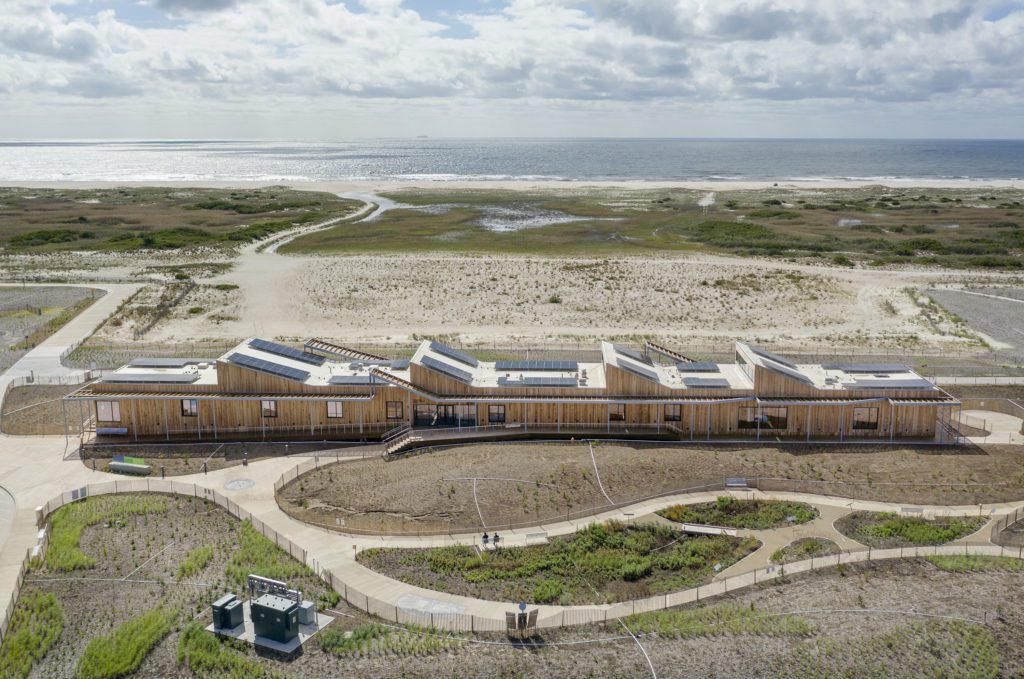Have your say in which architects will take home Architizer’s prestigious A+Awards: Public Voting opens this spring. Interested in next year’s program? Subscribe to our newsletter for updates.
As architecture firms across the United States join the AIA’s 2030 Commitment and integrate more sustainable practices into their work, effectively communicating the energy benefits of any given project during and after the design process is an ever-present challenge. Following a project’s completion, a plaque denoting an energy certification such as LEED may be installed on the building if it has achieved this accreditation, however, this doesn’t do much to educate the average person about what design elements actually contribute to this building’s energy efficiency. The way in which buildings, their systems and the environment interact is a complex equation that culminates in a calculated Energy Use Index (EUI) for any given project, which can vary over the course of its lifespan.
According to the International Energy Agency, architecture and its associated construction industry are responsible for approximately one third of total global energy consumption and nearly 15% of direct CO2 emissions, with energy demand from buildings continuing to rise. It is therefore imperative for new projects to not only aim for carbon neutrality and net zero status, but to also educate their inhabitants more globally about the impact of sustainability on the built environment.
With this in mind, in 2020 nARCHITECTS completed a pioneering facility that effectively visualizes how energy consumption shapes both architectural form and the natural environment. The project originally materialized when the New York State Parks Department asked nARCHITECTS to turn their attention towards a minor, ongoing renovation of a nature center at Jones Beach, that was in the planning stages at the time. The project’s ambition continued to grow as it developed, and the Jones Beach Energy and Nature Center eventually came to encompass an energy education center, a series of support offices, classrooms and a continuous sequence of exhibition spaces.
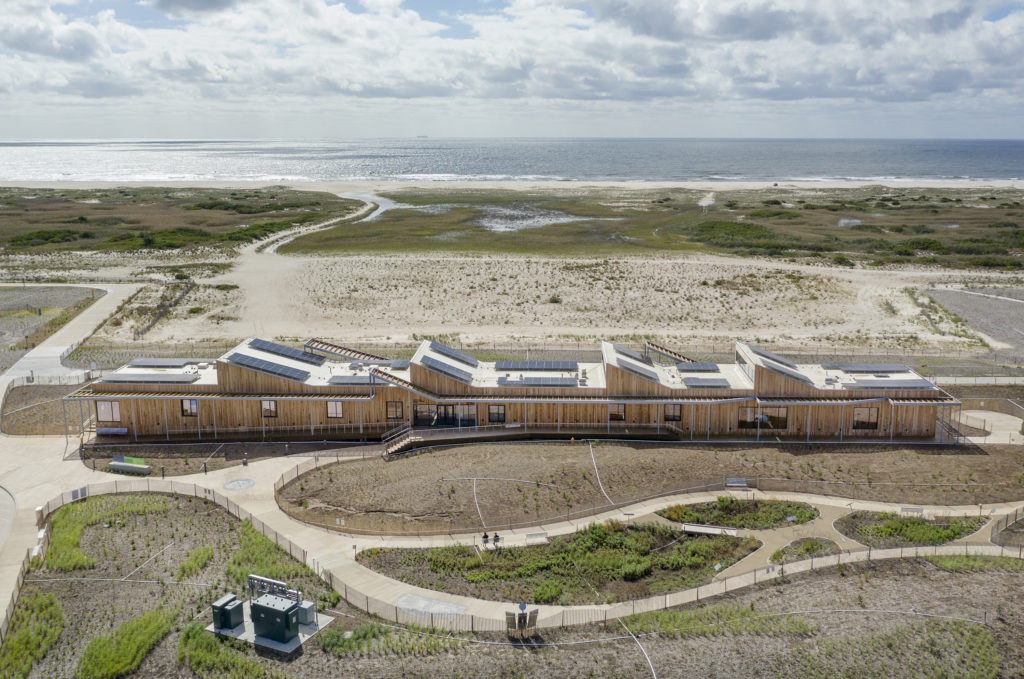
Jones Beach Energy and Nature Center © nARCHITECTS
The final budget, including the landscape and exhibitions, was roughly $30 million. Slightly under half of that total sum was contributed by the Long Island Power Authority (LIPA), which makes annual contributions and has partial curatorial oversight of the gallery spaces. This investment arrived on the heels of the 2019 Climate Leadership and Community Protection Act, as New York State began to pursue an aggressive clean energy plan through capital investments, systemic changes and collaborations between policymakers, energy producers and the public.
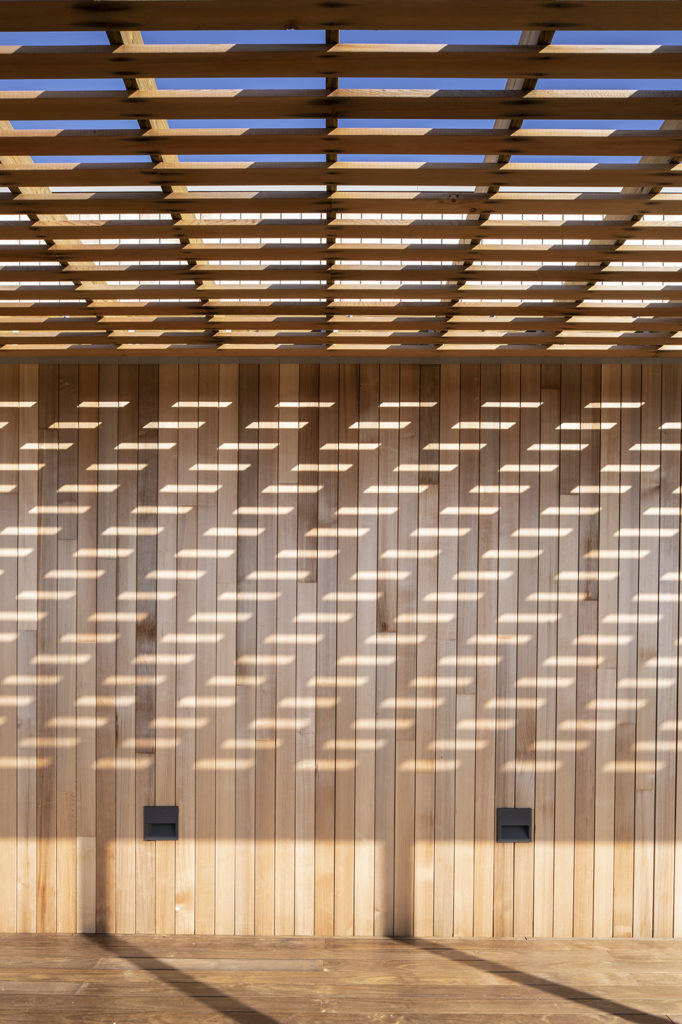
A shaded porch creates a constant interplay of shifting shadows. © nARCHITECTS
As a net-zero targeted building that permanently monitors and displays its own energy performance, the Jones Beach Energy and Nature Center is a true model for all projects that seek to enlighten visitors about their own carbon footprint and the ways that we can all become more conscientious environmental agents. The building has a thin, linear footprint that is born from the location of existing foundations and a concrete sub-surface belonging to a boathouse that formerly occupied the site.
At 320 feet in length, this single-story structure treads lightly on the site and functions as a gateway to the beautiful natural environment of Jones Beach. The building has a simple form, with a series of Northeastern-oriented sloped roofs and clerestory windows punctuating the long elevation to create the sensation of a set of rolling waves moving toward the shore. A cedar-clad canopy wraps the building on all sides, creating a continuous shaded porch that results in a continuously shifting pattern of shadows.
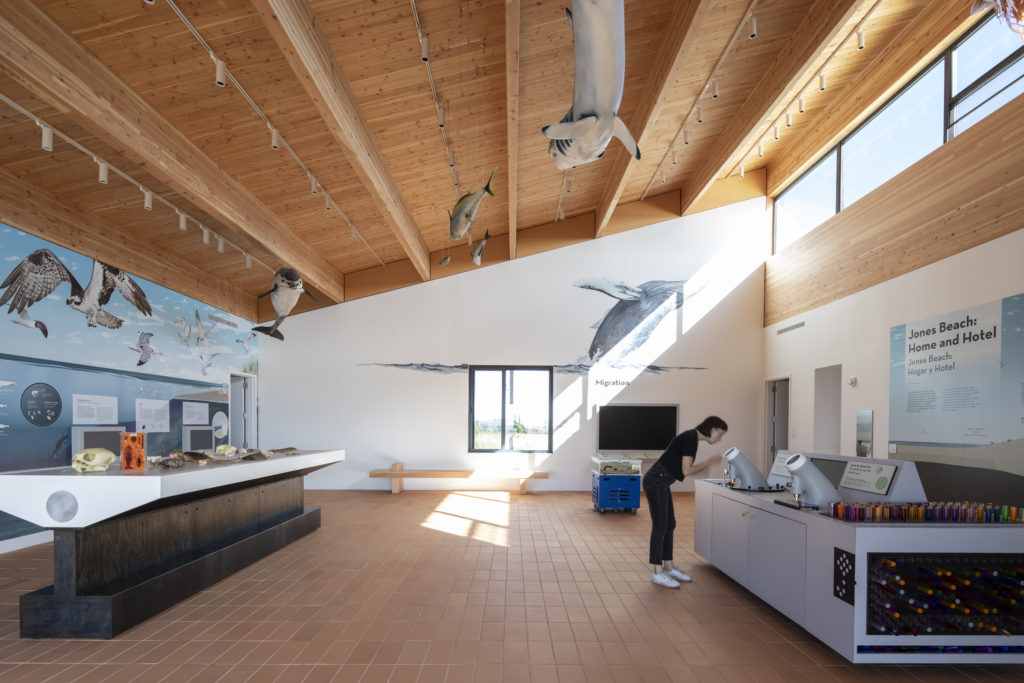
Clerestory windows bring light down into the gallery spaces. © nARCHITECTS
Inside, the gallery spaces feature plentiful glazing, creating a bright environment that consistently makes visual connections to the surrounding environment; a far cry from the typical white box gallery environment, completely divorced from its context. The Lobby and South Gallery explore the history of Long Island’s energy network, while the East Gallery investigates “The Power of Nature” through exhibits on the surrounding ecosystem, landscape conservation and habitat restoration. The West Gallery focuses on “The Nature of Energy,” through exhibits on natural energy sources, energy-efficient buildings, renewable energy technologies, embodied energy, and the impact of extreme weather on our power grid.
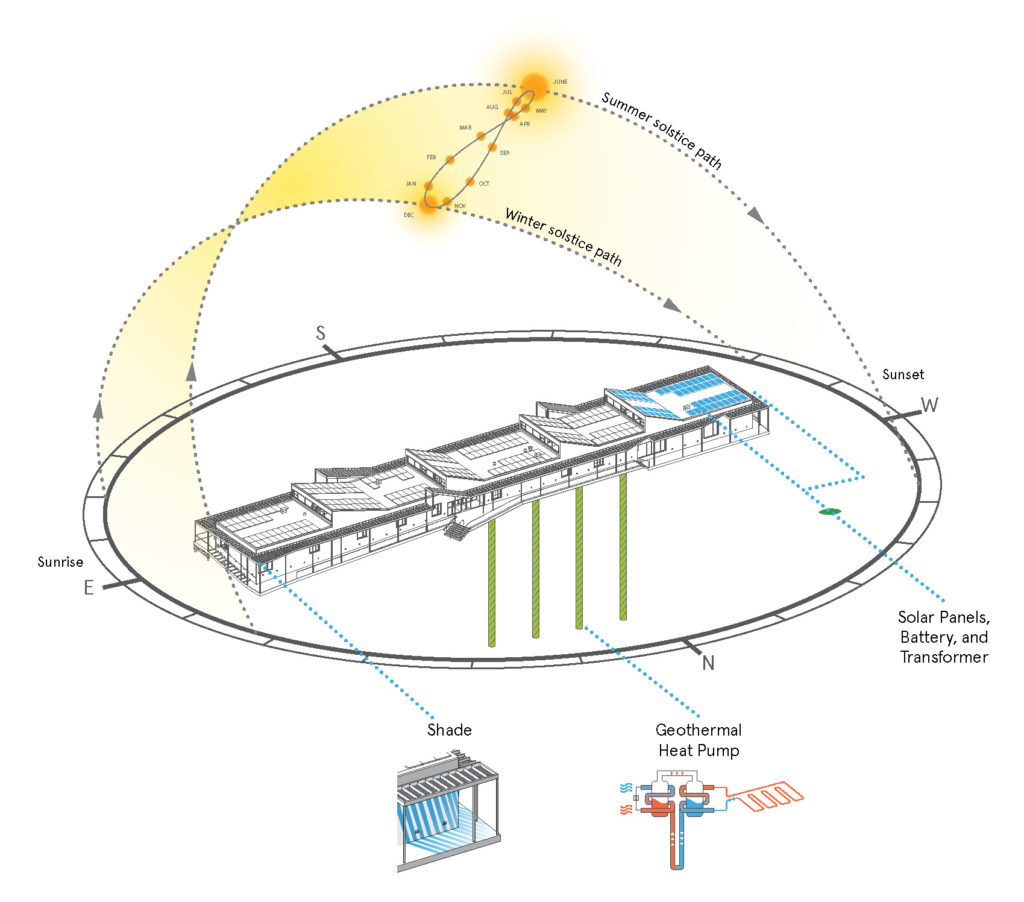
Jones Beach Energy and Nature Center Diagram © nARCHITECTS
Geothermal wells provide heating and cooling throughout the interior, while 260 photovoltaic panels provide enough energy to allow the building to operate off-grid for 6 hours. The Nature Center is educational for visitors in both its overall form and exhibition content, as it successfully outlines the role of energy in New Yorker’s lives and how thoughtful, site responsive architecture can minimize our impact on the environment.
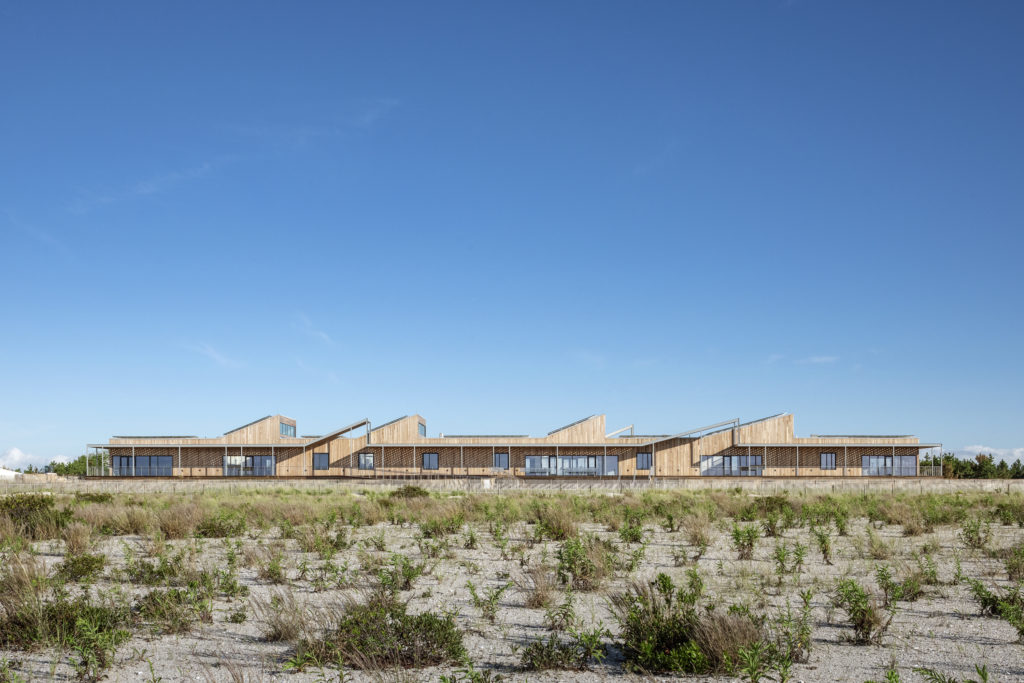
Jones Beach Energy and Nature Center © nARCHITECTS
What better place than Jones Beach to juxtapose the relationship between our built and natural environments. Structures like this one are a critical part of addressing the climate crisis, meeting sustainability goals, enhancing resilience, and supporting more equitable communities, as we move towards a less destructive future.
Have your say in which architects will take home Architizer’s prestigious A+Awards: Public Voting opens this spring. Interested in next year’s program? Subscribe to our newsletter for updates.

